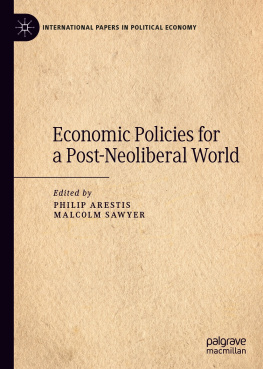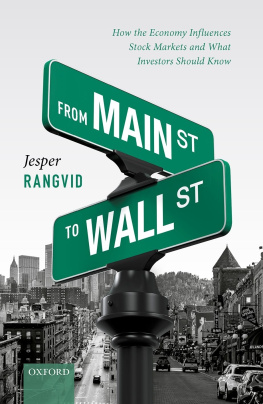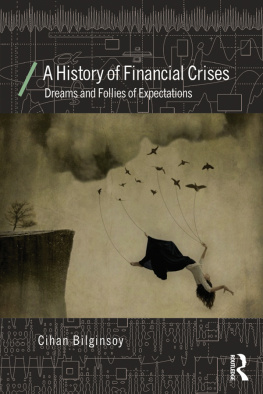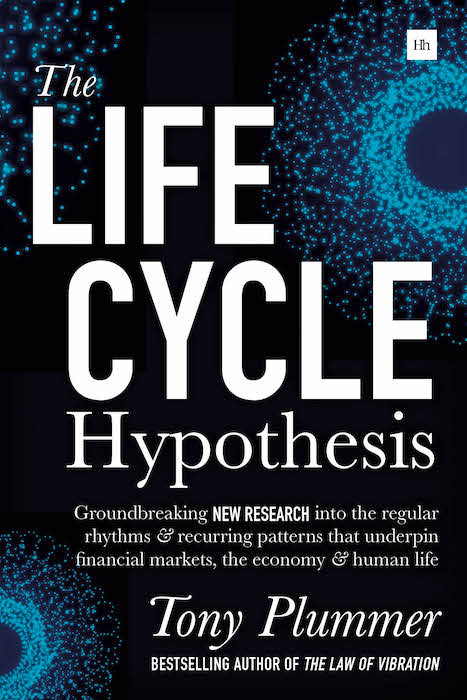The Life Cycle Hypothesis
Groundbreaking new research into the regular rhythms and recurring patterns that underpin financial markets, the economy and human life
By Tony Plummer
Harriman House
HARRIMAN HOUSE LTD
18 College Street
Petersfield
Hampshire
GU31 4AD
GREAT BRITAIN
Tel: +44 (0)1730 233870
Email: enquiries@harriman-house.com
Website: www.harriman-house.com
First published in Great Britain in 2018
Copyright Tony Plummer
The right of Tony Plummer to be identified as the author has been asserted in accordance with the Copyright, Design and Patents Act 1988.
Paperback ISBN: 978-0-85719-633-0
eBook ISBN: 978-0-85719-634-7
British Library Cataloguing in Publication Data
A CIP catalogue record for this book can be obtained from the British Library.
All rights reserved; no part of this publication may be reproduced, stored in a retrieval system, or transmitted in any form or by any means, electronic, mechanical, photocopying, recording, or otherwise without the prior written permission of the Publisher. This book may not be lent, resold, hired out or otherwise disposed of by way of trade in any form of binding or cover other than that in which it is published without the prior written consent of the Publisher.
Whilst every effort has been made to ensure that information in this book is accurate, no liability can be accepted for any loss incurred in any way whatsoever by any person relying solely on the information contained herein.
No responsibility for loss occasioned to any person or corporate body acting or refraining to act as a result of reading material in this book can be accepted by the Publisher, by the Author, by the Contributors, or by the employers of the Author or Contributors.
For the global community of independently-minded technical analysts and economists.
Contents
About the author
Tony Plummer has worked and traded in financial markets for more than 40 years. He now specialises in long-term economic and financial research and analysis, and writes and lectures on group behaviour.
Tony is the author of Forecasting Financial Markets , which describes the influence of crowd psychology on economic activity and financial market price behaviour. He is also the author of The Law of Vibration , which reveals the rhythms, patterns, and levels of support and resistance that were associated with the renowned stock market trader William Gann.
Tony is a former director of Helmsman Economics Ltd, of Rhombus Research Ltd, of Hambros Bank Ltd, and of Hambros Fund Management PLC. He is a Fellow of the Society of Technical Analysts in the UK and was, until November 2011, a Visiting Professorial Fellow in the Department of Economics at Queen Mary, University of London.
He has a Masters degree in economics from the London School of Economics, and an Honours degree in economics from the University of Kent. He has had four years of training in Core Process Psychotherapy.
Acknowledgements
My thanks go to three groups of people who have made a difference. The first consists of my ex-colleagues at Hambros Bank Ltd, especially David Tapper and John Heywood, who were prepared actively to debate alternative views. The second is formed by the members of the Society of Technical Analysts, especially Deborah Owen, Adam Sorab, Axel Rudolph and Anne Whitby, who encouraged pursuit of the idea that there was a theoretical justification for the regular rhythms and recurring patterns in financial markets. The third group relates to my more recent business career, where regular meetings with high calibre people facilitated a creative interchange of ideas. I am thinking of Robin Aspinall, Robert Brooke, and Peter Warburton, and of clients of Rhombus Research Ltd and Helmsman Economics Ltd who cannot be named.
My thanks, too, have to go to two individuals who are no longer with us, but who book-ended my thought processes between 1980 and 2011: Arthur Koestler and William Gann. Mr Koestler championed the idea that each person has a tendency both to be an individual and to belong to a crowd. Mr Ganns work then made clear that crowd behaviour is characterised by specific rhythms and patterns. His hidden knowledge is the basis of the insights that drove The Law of Vibration and, now, The Life Cycle Hypothesis . We all stand on the shoulders of the giants who went before us.
And, finally, I must add that none of this would have been possible without the indefatigable support of my partner for this life journey my wife, Glenys.
Preface
Life is vibration. Somehow we know this, but we have a tendency to treat the end result as being only quantitative, in order that we might measure it. Yet each vibration has a certain quality to it that enables it to resonate with, harmonise with, and ultimately integrate with, other vibrations.
Out of these qualitative dimensions arises a natural hierarchy. Each part each vibration contributes to a greater whole, but that whole is so much greater than just the sum of its parts. Moreover, each element in the hierarchy including the hierarchy itself oscillates.
I stretched towards a fuller understanding of this fundamental idea in the various editions of Forecasting Financial Markets .
One of the difficulties facing policy-makers is that vibration incorporates downswings as well as upswings. Indeed, without downswings there could be no upswings, because living systems need periods of rest in order to generate the energy for periods of activity. This means that economic recessions and equity market bear phases cannot be avoided. This is important because evolution is literally transmitted through cyclical patterns. Once economic and financial systems have learnt that there are permanent changes in their environment, a series of fluctuations necessarily emerges. So there are two forces oscillation and learning that contribute to the process of change. But this is not all. The third insight which is now developed more fully in this book is that the effects of collective learning have a defined life span, and that the associated evolution traverses a very specific pattern. It is this pattern that dominates all economic and social behaviour.
The archetypal pattern is not of my own making. I came very close to defining it in Forecasting Financial Markets. So close, in fact, that the correct version of the pattern is almost indistinguishable from the one that I had deduced from the data. This made it particularly easy to recognise the correct configuration when I found it elsewhere. The pattern was hidden in the structure of a book authored by the legendary stock market trader, William Delbert Gann: The Tunnel Thru The Air , published in 1927. The pattern turned out also to be present in Mr Ganns esoteric book, The Magic Word , published in 1950. The details of my findings were presented in The Law of Vibration: The Revelation of William D. Gann , published by Harriman House in early 2013.
In that book, I drew attention to the fact that the pattern had a history. The same basic configuration was hidden in the structure of George I. Gurdjieffs book, All and Everything: Beelzebubs Tales to his Grandson , published in 1950. Moreover and as a sign of its perceived importance a number of Mr Gurdjieffs students subsequently incorporated a version of the pattern into the physical structure of their own written works. Most amazingly, however, a pattern that is almost identical to Mr Gurdjieffs can be found in the Greek text of St. Matthews Gospel in the Christian New Testament . If we assume that the writer(s) of Matthews Gospel lived and worked in a milieu that was already rich in esoteric understandings, then the patterns ancestry is likely to be very much older than 2,000 years.












